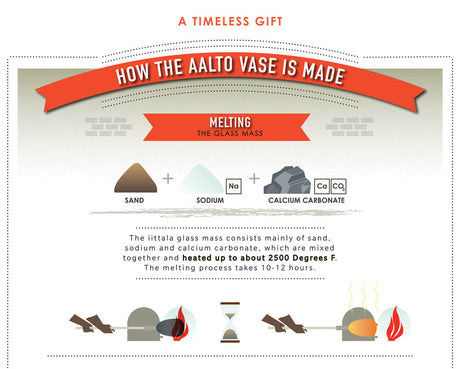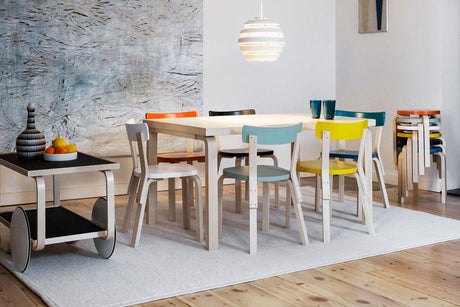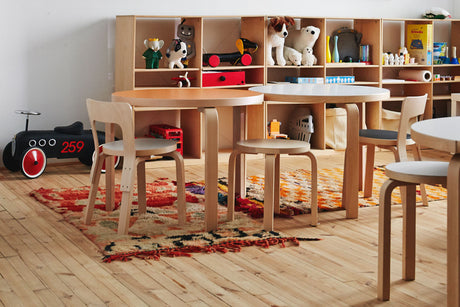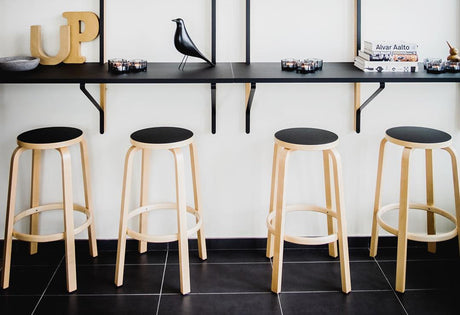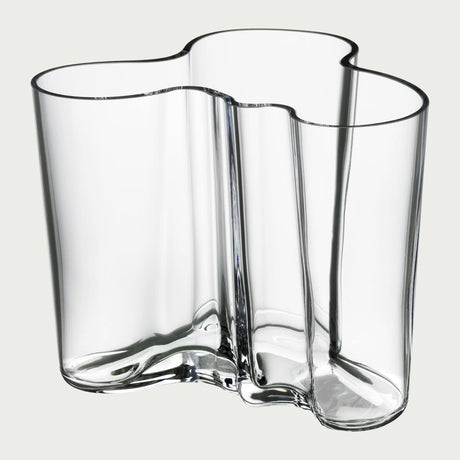Meaning "Construction House," Bauhaus originated as a school for the arts in early 20th century Germany and was founded by Walter Gropius. The term Bauhaus" would soon evolve to encompass the modern art movement in architecture and design that the school pioneered. The movement merged arts and crafts" approach with modernism and a fine art aesthetic. Though the style peaked in the 1920's and 1930s, its techniques can be seen today within museums and even on street art. And while Germany was the hub of Bauhaus, it influenced artists of all backgrounds and mediums across Europe and worldwide. Was Finnish architect and designer Alvar Aalto one of them? 
Looking at the abstract paintings of famous Bauhaus artists like Paul Klee and Wassily Kandinsky, flat planes are paired with overlapping shapes to give the look of dimension. Balance throughout the work is also an important part of Bauhaus. Other style include avant-garde collages and modernist posters with bold type face and abstract shapes or blocks of color. Like Alvar Aalto, these artists put an emphasis on function and believed "less was more," making the art free from unnecessary ornamentation like the ornate works of before. Bauhaus aimed to bring art back into contact with everyday life, which was a philosophy Alvar Aalto shared as well.

But Alvar Aalto was primarily an architect, whose designs were born from his building projects. Similar to Bauhaus art, Bauhaus architecture can also be recognized by its harmoniously balanced geometric shapes and dedication to function. Floor to ceiling windows allow for lots of light and an opportunity to see the greenery of nature through the walls of glass. This was borrowed from the "American Arts and Crafts Movement," which is best known by the buildings of architect Frank Lloyd Wright. But, look to the architectural works of Alvar Aalto and you'll find the same themes.

Inside, open floor plans held minimal decoration in favor of beauty in simplicity. Instead, a select few of intentional yet iconic pieces would serve as functional accents. The most famous of these Bauhaus houses is arguably the Wassily chair. One can see a similar aesthetic in it to Alvar Aalto's designs, though the iconic pieces he designed for his architecture projects were usually made of warmer, natural materials like wood as opposed to sleek and stark tubular steel with leather belts. Take, for example, the Paimio chair created by Alvar Aalto for the Paimio Sanatorium in 1933.

Search "Alvar Aalto Bauhaus," and you'll find there isn't a lot of information on the two together besides mentions of Aalto collaborations with big names of the Bauhaus movement like László Moholy-Nagy. Though Alvar Aalto shared the minimal, function-first philosophy of Bauhaus art, saying he was a part of that movement would not be entirely accurate. Born a decade before most of the leaders of the Bauhaus movement and in a different country, he can't be defined by the school's influence of by any distinct style. Alternatively, Alvar Aalto can be said to be defined by his humanist philosophy. Like the leaders of Bauhaus, he too wanted to bring art into everyday life but in his own, pioneering way. His entrepreneurial spirit led him to patent a unique method of bending wood for his signature furniture, since he designed buildings with attention to detail down to the furnishings themselves. While Bauhaus was born out of a school, Aalto's influence would lead to a school dedicated to his own mark on the world of architecture and design in 2010: Aalto University.


